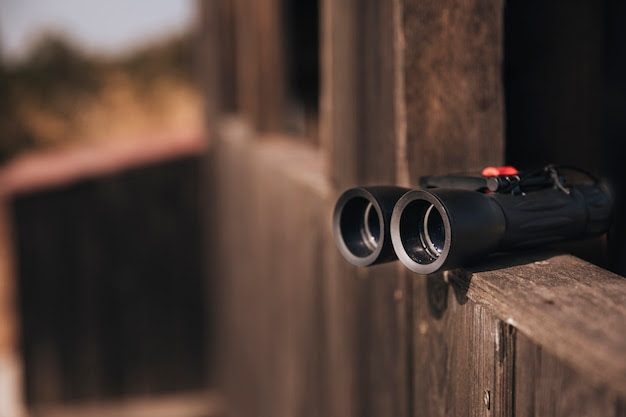Understanding the Different Types of Night Vision Devices
Night vision devices are a revolutionary tech that lets users see in the dark. It boosts visibility and safety in various situations. They work by intensifying existing light or using thermal imaging. Night vision has become popular amongst pros like law enforcement, military personnel, hunters, and outdoor enthusiasts.
Different Types of Night Vision Devices
Night vision tech comes in various types to suit different needs. These devices enhance visibility in reduced light or dark settings, permitting users to view even when natural light is thin or absent.
A common type of night vision device is the goggles. These use image intensifier tech to boost available light and give a clearer view of the environment. They are regularly donned by military personnel or law enforcement during nighttime activities.
Night vision binoculars are also a type. Like goggles, these utilize image intensifier tubes to accumulate and amplify light. This enables enhanced depth perception and a wider field of view, making them suitable for activities like wildlife observation or hunting in low-light circumstances.
Night vision monoculars are popular for those wanting something more lightweight and portable. These single-lens devices are compact and often feature built-in infra-red illuminators emitting invisible infra-red light to the eye, further improving visibility in complete darkness.
Furthermore, specialized night vision devices like thermal imaging cameras identify heat signatures instead of relying on present light. This technology can be especially helpful in detecting items or people hidden by foliage or other hindrances.
It is essential to remember that while night vision devices significantly improve visibility in low-light conditions, they do have boundaries. Factors like nearby light levels and weather conditions must be considered for ideal performance.
According to an article in The New York Times, advancements in night vision tech have revolutionized industries such as surveillance and security, allowing for improved nighttime monitoring abilities.
How Night Vision Devices Work
Night vision devices use tech to amplify light. This lets humans see in dark or low-lit environments. The device gets light through a lens and intensifies it. This intensified image is then shown to the user through an eyepiece.
One type of night vision is thermal imaging cameras. These detect infrared radiation from objects and individuals. This is useful for search & rescue, military surveillance, electrical maintenance, and building inspections.
Another type is image enhancement. It captures light and turns it into electrons. Then, it amplifies and projects the electrons onto a phosphor screen. This creates a visible image. Image enhancement is found in binoculars and monoculars used by hunters and outdoor enthusiasts.
Night vision has a history dating back to WWII. The military first used it and called it the “sniper scope.” They were bulky and required active infrared illumination. In the 1960s, passive night vision systems were developed using ambient light sources. Since then, night vision has become smaller and more portable. It’s used by civilians, the military, and law enforcement today.
Pros and Cons of Each Type of Night Vision Device
Night vision devices are a must-have for better visibility in dim light. Different types have advantages and disadvantages, so understanding them is critical to making the right choice.
Image intensifiers boost available light to create an image. Pros include high-quality images, portability, and small size. But they can be pricey and not work in pitch dark.
Thermal imaging picks up heat signals to create a picture. It’s great for detecting hidden people or objects and is suitable for long-range sensing. However, the resolution is lower than other night vision devices.
Digital night vision devices use electronic sensors to capture and amplify light. They’re versatile and can switch from night to day mode without damaging the sensor. Extras like recording and Wi-Fi live streaming are nice too. But they may be pixelated or noisy in low light.
It’s essential to think about what you need before buying. Did you know night vision was invented during WWII? It was developed by Germany, the U.S., and the Soviet Union to get ahead in nighttime battles.
Applications of Night Vision Devices
Night-vision devices have multiple unique uses beyond the military. Law enforcement uses them for surveillance in low-light conditions. Naturalists and wildlife enthusiasts can observe nocturnal animals without disturbing them. Hunters benefit from enhanced visibility during dark hours. Pilots use night-vision goggles to navigate during nighttime flights.
Amazingly, this technology started in World War II. Since then, it has become available for civilian use. It has led to progress in many industries beyond just combat operations.
Choosing the Proper Night Vision Device
Night vision devices come in three categories:
- Image intensifier tubes: These devices use ambient light to improve visibility.
- Thermal imaging: Thermal imaging devices detect infrared radiation and work in complete darkness.
- Digital night vision: This type captures light and converts it to digital signals for higher-resolution images.
When deciding on a night vision device, it is essential to consider factors such as:
- Use: Determine the specific purpose or activity for which you will use the device.
- Environment: Consider the environmental conditions in which the device will be used.
- Range: Evaluate the maximum distance or content the device can effectively detect or capture images.
- Budget: Set a budget and consider the price range of different night vision devices.
Additionally, it is recommended to prioritize factors such as:
- Image quality: Look for devices that offer clear and sharp images.
- Range: Choose a machine with appropriate range capabilities for your needs.
- Durability: Consider the device’s durability to withstand outdoor conditions and frequent use.
- Ease of use: Look for user-friendly and easy-to-operate machines.
It is always beneficial to seek expert advice or conduct online research to make an informed decision when purchasing a night vision device.
Tips for Using Night Vision Devices Effectively
Using night vision devices can improve your visibility in low light. To make the most out of them, here are some helpful tips:
- Positioning: Fit the device to your head or eyes comfortably and securely.
- Stay still: Minimize movement while using the device to maintain clarity.
- Avoid bright lights: Excessive exposure to bright sunlight can impair your night vision. Use filters if needed.
- Use infrared illuminators: Activate this feature for extra illumination if your device has it.
- Experiment: Familiarize yourself with the settings and adjustments on the device to optimize image quality.
- Care for batteries: Be mindful of the battery life and carry spares. Check battery levels regularly.
To further enhance your experience, consider these:
- Camouflage: Wear attire that matches the environment to remain undetected.
- Cleanliness: Keep the lens and components of the device clean for optimal performance.
- Depth perception exercises: Practice judging distances during daylight hours to improve accuracy at night.
By following these tips, you can get the most out of your night vision device, providing enhanced visibility and making it easier to navigate low-light environments.
Conclusion
Night vision devices come in many forms. From monoculars to binoculars, each has its advantages. Monoculars are lightweight and ideal for people on the move. Binoculars offer stereoscopic vision, which is good for hunters or wildlife spotters. Thermal imaging cameras create visuals in low light and are used by outdoor adventurers. Goggles can be worn and are popular with law enforcement and the military.
Choose your device carefully. With industry leaders like Steel Industries revolutionizing the lead time associated with night vision devices, hunters can use them to improve accuracy, and nature lovers to explore wildlife. Investing in a high-quality machine such as those provided by Steel Industries can unlock a world of night-time adventure. Don’t let fear hold you back – take control and see clearly when others cannot.




